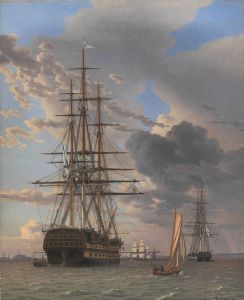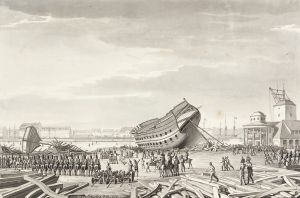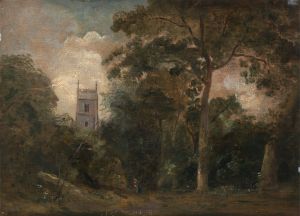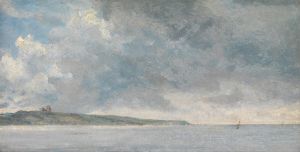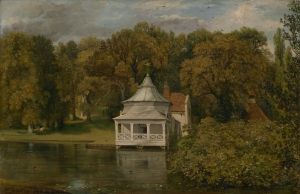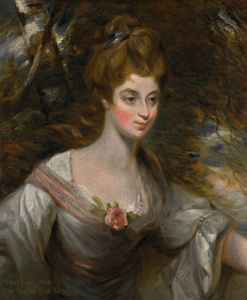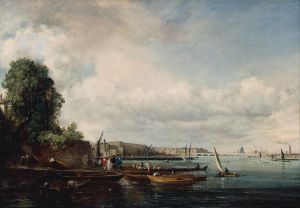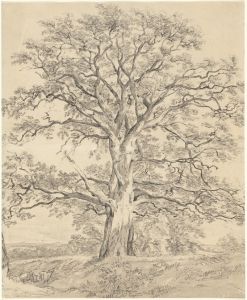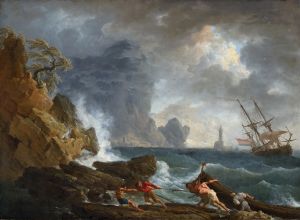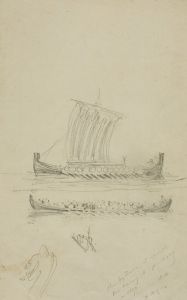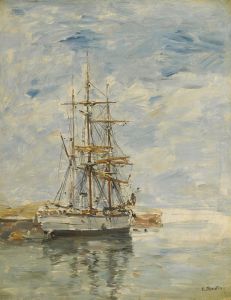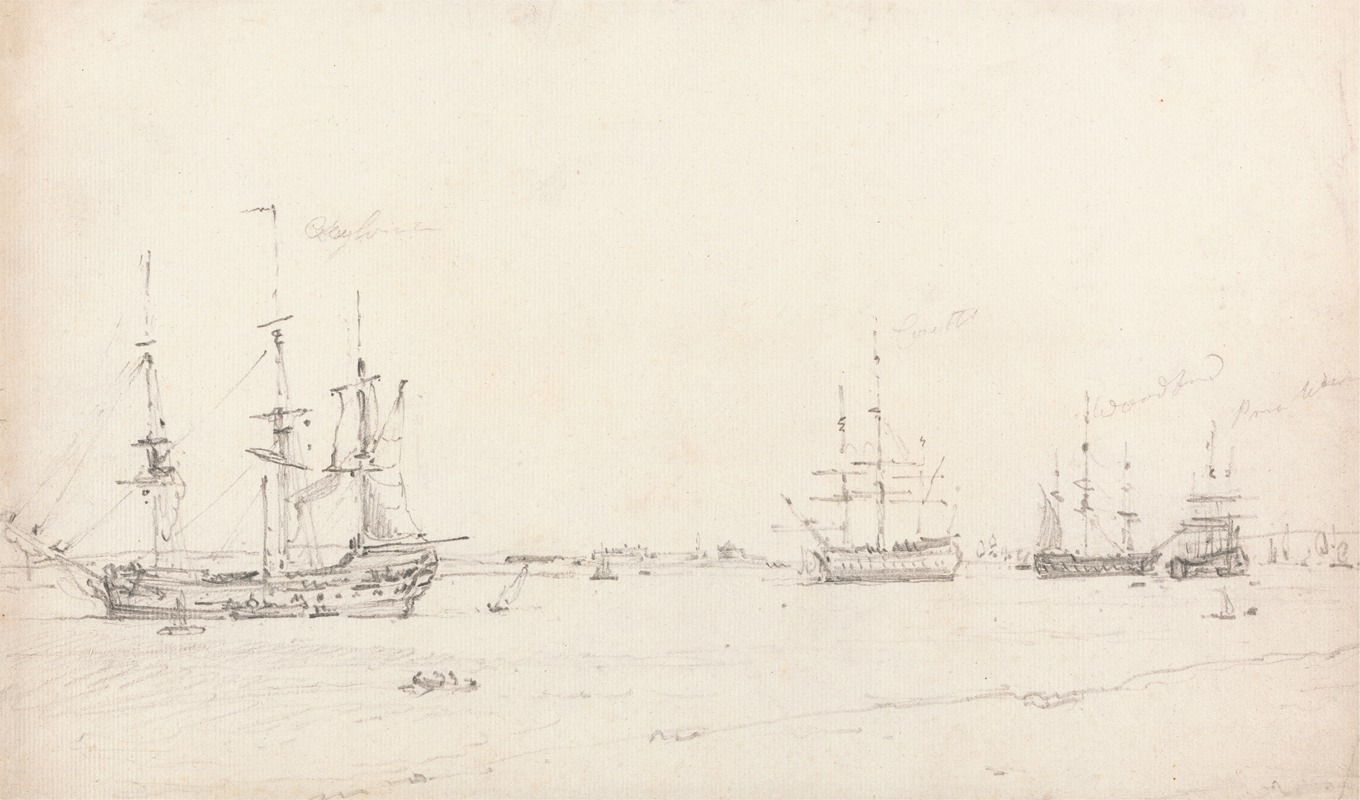
Four East Indiamen at Archor
A hand-painted replica of John Constable’s masterpiece Four East Indiamen at Archor, meticulously crafted by professional artists to capture the true essence of the original. Each piece is created with museum-quality canvas and rare mineral pigments, carefully painted by experienced artists with delicate brushstrokes and rich, layered colors to perfectly recreate the texture of the original artwork. Unlike machine-printed reproductions, this hand-painted version brings the painting to life, infused with the artist’s emotions and skill in every stroke. Whether for personal collection or home decoration, it instantly elevates the artistic atmosphere of any space.
"Four East Indiamen at Anchor" is a painting by the renowned English artist John Constable, known for his landscape paintings that capture the natural beauty of the English countryside. Constable, born in 1776 in East Bergholt, Suffolk, is celebrated for his dedication to painting scenes of rural England, particularly the area surrounding his home in Suffolk, which is often referred to as "Constable Country."
The painting "Four East Indiamen at Anchor" is one of Constable's lesser-known works, and it depicts a maritime scene rather than the pastoral landscapes for which he is most famous. The artwork features four East Indiamen ships, which were large trading vessels used by the British East India Company during the 17th to 19th centuries. These ships were crucial for trade between Britain and the Indian subcontinent, carrying goods such as spices, textiles, and tea.
In this painting, Constable captures the ships at anchor, likely in a harbor or estuary, with a focus on the interplay of light and atmosphere, a hallmark of his style. The scene is characterized by its attention to detail and the realistic portrayal of the ships, set against a backdrop that suggests a calm and serene environment. The use of light and shadow in the painting demonstrates Constable's skill in rendering naturalistic scenes, a technique that he honed throughout his career.
Constable's interest in maritime subjects, although not as prevalent as his landscapes, reflects the significance of naval and trade activities in Britain during his lifetime. The East Indiamen were not only vital for commerce but also played a role in the expansion of the British Empire, making them a symbol of Britain's global influence during the period.
The painting is an example of Constable's ability to convey the majesty and scale of these impressive vessels, while also capturing the tranquility of the scene. His work often emphasized the beauty of the natural world, and even in this maritime setting, he manages to infuse the composition with a sense of peace and stability.
While "Four East Indiamen at Anchor" may not be as widely recognized as Constable's iconic works like "The Hay Wain" or "Dedham Vale," it nonetheless showcases his versatility as an artist and his capacity to depict a variety of subjects with equal skill and sensitivity. The painting is a testament to Constable's mastery of capturing the essence of his subjects, whether they be the rolling hills of Suffolk or the stately ships of Britain's maritime fleet.
John Constable's contribution to art extends beyond his paintings; he was instrumental in the development of the Romantic movement in England and influenced future generations of artists with his innovative techniques and dedication to capturing the natural world. His works continue to be celebrated for their beauty, technical skill, and emotional depth, securing his legacy as one of England's greatest painters.







